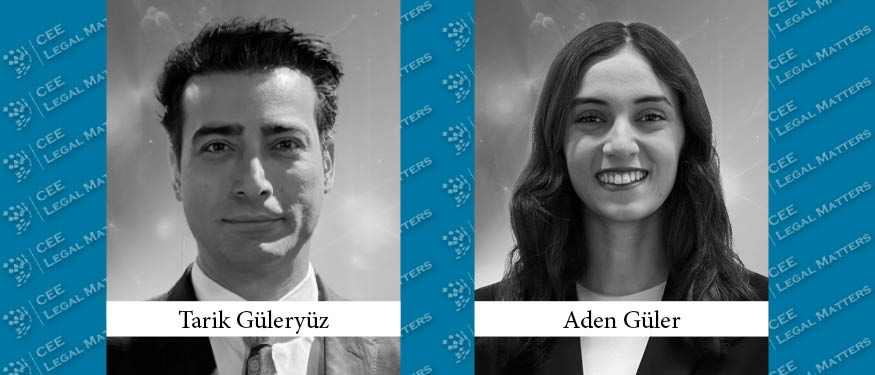The development of the hydrogen economy has been recognised as one of the priorities for the implementation of the European Green Deal, the main goal of which is to achieve climate neutrality in Europe by 2050. Poland is Europe's third-largest producer of hydrogen; however, its production is done exclusively with fossil fuels for companies' own needs. The regulations currently in force in Poland do not provide adequate conditions for the effective implementation of the strategy for the development of the green (renewable) hydrogen market.
A draft amendment to the Energy Law was published on 27 May 2024 (the "Draft Amendment"), introducing regulations for the hydrogen sector. The main purpose of the Draft Amendment is to effectively implement the objectives of the EU Hydrogen Strategy and the Polish Hydrogen Strategy by 2030 with an outlook to 2040. Consequently, the Draft Amendment will set out a proper regulatory framework for the functioning of the renewable hydrogen market in Poland.
The Draft Amendment is planned for adoption in the second quarter of 2024. Below we present the most important changes that the Draft Amendment provides for.
Introduction of legal definitions related to the hydrogen market
The legislator opted out of introducing a general definition of hydrogen in the Draft Amendment. Instead, it introduces definitions for low-emission hydrogen, non-biological renewable hydrogen and renewable hydrogen. It is also planned that the quality parameters for hydrogen will be defined in a separate regulation implementing the Draft Amendment.
Currently, when defining the term "fuels", the Polish Energy Law distinguishes between solid fuels, liquid fuels and gaseous fuels. The Draft Amendment introduces hydrogen as the fourth category of "fuel".
In addition, the Draft Amendment includes definitions for hydrogen system operators, including a combined gas-hydrogen system operator, which will enable the use of gas assets for the development of hydrogen transmission infrastructure. The Draft Amendment also provides for the introduction of legal definitions relating to the interconnected hydrogen system, hydrogen transmission network, hydrogen distribution network, hydrogen system user, hydrogen transmission, hydrogen distribution and others.
The Amendment Draft introduces rules for the certification and designation of hydrogen system operators, the definition of their responsibilities and the rules for ownership unbundling.
Inclusion of cross-sectoral opportunities for hydrogen use
Crucially, the Draft Amendment introduces definitions of a hydrogen storage facility and a small hydrogen storage facility. The legislator sought to enable the storage of hydrogen in large quantities as well as for local use. A definition of energy storing is also included to allow for the development of storage facilities combining electricity storage and gaseous fuel storage.
It is also envisaged that regulations will be adopted for geographically limited hydrogen networks, which are intended to be the equivalent of direct lines. They will enable hydrogen to be transported within a given area by supplying hydrogen from generation facilities directly to the places of use.
Limited licence obligation for hydrogen activities
As the development of the hydrogen market is at the initial stage, the authors of the Draft Amendment propose to keep the production, transmission and distribution of hydrogen outside the scope of the obligation to have a licence. In the case of hydrogen transmission and distribution, a key part of the legal requirements and standards related to licences was included in the procedure for appointing an entity as the operator of the hydrogen system (transmission or distribution).
The Draft Amendment imposes an obligation to obtain a licence for hydrogen storage, except for local storage in small hydrogen storage facilities, and for hydrogen trading, except if the annual turnover does not exceed the equivalent of EUR 1m.
In addition, the Draft Amendment introduces the obligation for the hydrogen system operator to keep a register of hydrogen storage installations that are not small and that are connected to the hydrogen system.
Simplifications for entities investing in the development of the hydrogen system
The Draft Amendment introduces facilitations for the development of hydrogen purification facilities and hydrogen networks. According to the Act, hydrogen purification installations with a throughput of no more than 250 kg of hydrogen per day will only be implemented based on a notification of construction work and will not require a building permit.
Additionally, the Draft Amendment stipulates that the construction of hydrogen networks with an operating pressure of no more than 0.5 MPa will be possible without a building permit, only based on a notification of construction work.
The advantage of this solution from a formal legal perspective is that the building notification procedure is simpler compared to obtaining a building permit.
By Grzegorz Filipowicz, Partner, and Karina Krzoska, Associate, Schoenherr













